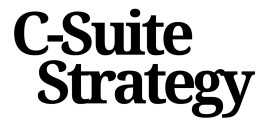
Understanding Point Solutions
The Role and Definition of Point Solutions
Understanding the essence of point solutions is pivotal for any corporate strategy. These targeted software solutions are designed to address specific challenges within a company's broader operational framework. Whether it’s enhancing the capabilities of instructors through technologies like turning technologies or streamlining interactions on platforms such as blackboard learn, point solutions can provide significant boosts to productivity. As digital transformation continues to reshape the landscape, businesses are increasingly relying on specialized applications to cater to particular functions. For instance, in academic settings, tools like TurningPoint software facilitate seamless class management and effective use of both physical clickers and mobile devices for real-time polling. This is crucial in enhancing engagement between instructors and students, as well as aiding the canvas course setup process.Unique Features and Use Cases
The flexibility of point solutions allows them to be adapted to various sectors. From creating a pointsolutions account to utilizing a web-based platform for selecting question types, these tools are embedded in our daily workflows. By clicking a simple button on a mobile app, an instructor can convert their class into a dynamic learning environment. When integrating these solutions into your corporate strategy, it is vital to consider the impacts on existing systems. One key advantage of point solutions is their ability to function independently while also complementing broader technology stacks. This makes the related account set up and integration, like an instructor account or a pointsolutions account, both straightforward and efficient. For further insights into how these targeted solutions can be adapted in organizational strategic frameworks, aligning them with overarching business goals is crucial. A comprehensive approach is necessary for maximizing impact through strategic alignment. This ensures these tools are not only employed tactically but also offer maximum value across various touchpoints in your operations.Strategic Integration of Point Solutions
Harmonizing Solutions for Strategic Success
When implementing point solutions, strategic integration is key to maximizing their impact within your organization. It requires a process that encompasses both technological and human aspects, ensuring that these solutions align with overall corporate strategies. By acknowledging the distinct role each solution plays, a seamless harmony can be achieved.
Start by crafting a clear understanding of your organization's strategic objectives. Aligning pointsolutions with these objectives is crucial. For example, integrating pointsolutions like BlackBoard Learn in educational settings transforms the instructor's approach to using classroom technology. An instructor, for instance, can utilize pointsolutions software to enhance engagement through question types that accommodate both physical clicker responses and web-based participation.
Creating a strategic transformation framework serves as a guide to portfolio alignment. This includes conducting an analysis of existing systems such as the Turning Technologies platform, and how well they work with new implementations. A Turning account, linked directly to a student's device, can facilitate seamless interactions and course participation, provided there's a coherent account creation and management system.
Integration also involves addressing technical compatibilities. For instance, when introducing a mobile app into a corporate strategy, assess its compatibility with current enterprise systems like email addresses, ensuring that personal devices don't hinder the software's utility. An instructor account on systems like TurningPoint Web should be integrated efficiently to take advantage of functionalities like all-encompassing polling capabilities.
Ultimately, a strategic approach to integrating pointsolutions involves pinpointing which solutions work best with existing systems to enhance performance. Efficient integration is about understanding the broader organizational needs, selecting the right tools, and ensuring those tools effectively communicate with each other to enrich the strategic landscape.
Evaluating the Effectiveness of Point Solutions
Assessing the Value and Results of Point Solutions
Evaluating the effectiveness of point solutions is crucial in ensuring they contribute positively to your corporate strategy. It requires an understanding of their impact on different fronts, such as user engagement — be it instructors or students using apps like Blackboard or Turning Technologies. This evaluation will often hinge on a variety of indicators, adaptable to your specific needs and technological platforms.
First, consider the integration efficiency. How smoothly do point solutions like TurningPoint Web or PointSolutions software blend into your existing systems such as Canvas or Blackboard Learn? The seamless incorporation of technology can amplify user adoption and satisfaction, whether the solution involves a physical clicker or a mobile device application.
Another critical metric is user interaction. Conduct polling sessions to gauge how often instructors and students engage with these solutions. Do they prefer responding via a mobile app or using a physical clicker? Data collected from these interactions can reveal whether your selected solutions are meeting user expectations and enhancing the learning experience.
Additionally, quantitative data such as improved course engagement or increased response rates to classroom queries can offer concrete evidence of a solution’s success. An analysis of account creation metrics, such as the number of students and instructors setting up a PointSolutions account or a mobile app account, can provide insights into user buy-in and scalability.
Lastly, consider conducting regular surveys to solicit feedback. Use this feedback to identify any areas for improvement or technological hurdles, such as issues with email address integration or account creation processes. Engage with instructors via platforms like Instructor Turning Technologies accounts, providing support and gathering insights for ongoing evaluation.
In measuring point solutions' impact, an iterative approach is beneficial. Continually revisit and refine your evaluation methodologies to stay aligned with technological advancements and user expectations. By connecting these efforts with your strategic goals, you can ensure point solutions deliver their promised benefits within your corporate strategy. Interested in aligning your operations with strategic objectives? Consider exploring mastering your annual operating plan for insights.
Overcoming Challenges with Point Solutions
Addressing Common Barriers in Implementing Point Solutions
Integrating point solutions into your corporate strategy is not without its challenges. As we delve into the intricacies of strategic integration, it becomes apparent that overcoming these hurdles is crucial for maximizing the benefits of these targeted solutions.
Ensuring Seamless Integration with Existing Systems
One of the primary challenges is ensuring that point solutions integrate seamlessly with existing systems like Blackboard or Canvas. This requires a thorough understanding of your current infrastructure and the capabilities of the pointsolutions software. For instance, if your organization relies heavily on Blackboard Learn, it is essential to verify that the pointsolutions account can communicate effectively with it, allowing instructors to leverage tools like the TurningPoint web for enhanced classroom technology.
Managing User Adoption and Engagement
Another significant barrier is user adoption. Whether it's instructors adapting to new tools or students using a mobile app for the first time, engagement can be a hurdle. Consider incorporating training sessions and providing resources like a detailed guide on setting up a pointsolutions account or downloading the necessary apps. Encourage instructors to utilize polling and clicker functionalities to engage students actively during courses.
Ensuring Data Security and Privacy
Data security is a paramount concern when implementing any new technology. Ensure that your pointsolutions adhere to the highest standards of data protection, particularly when handling sensitive information like email addresses. Establish clear protocols for data management and ensure that all users are aware of these policies.
Continuous Evaluation and Feedback
Finally, continuous evaluation is key to overcoming challenges with point solutions. Regularly solicit feedback from users through surveys or direct communication. This feedback loop will help identify areas for improvement and ensure that the solutions remain effective and relevant to your organizational needs.
Case Studies of Successful Point Solutions
Real-World Success Stories with Point Solutions
Captivating case studies can be a powerful motivator for C-suite executives looking to implement point solutions within their organization. These stories demonstrate tangible benefits and offer invaluable lessons learned. One CEO spearheaded a transformation using pointsolutions software to streamline their classroom technology. By adopting a web-based pointsolutions instructor tool, they seamlessly integrated existing systems such as Canvas and Blackboard Learn with the new technology, ensuring a smooth transition. The pointsolutions app and physical clicker options enhanced engagement in courses and catered to diverse preferences across mobile devices. Another example involves a company that faced declining polling participation among students. By leveraging mobile app capabilities along with traditional physical clickers, the instructor could engage students, select question types, and encourage interactivity. The pointsolutions account integrated with email and provided efficient communication, further enriching the learning experience. An interesting application of point solutions was seen in an enterprise that utilized turningpoint web and pointsolutions software to gather real-time feedback. This allowed instructors and executives to quickly adapt strategies based on student responses through a straightforward click of a button. In all these cases, the transformation was not merely about deploying technology. It involved crafting a strategy tailored to the organization's unique needs, ensuring comprehensive alignment between account creation, instructor turningtechnologies, and participant engagement. The successful implementation of point solutions, therefore, necessitates a strategic integration with an in-depth understanding of available tools and challenges to be overcome.Future Trends in Point Solutions
Emerging Trends in Point Solutions
The landscape of point solutions is evolving rapidly, driven by advancements in technology and changing business needs. As companies strive to maximize the impact of these solutions, several trends are emerging that will shape their future deployment and integration.
Firstly, the integration of artificial intelligence and machine learning is becoming more prevalent in pointsolutions. These technologies enable more sophisticated data analysis, allowing businesses to derive actionable insights from their operations. For example, AI-driven analytics can help instructors using pointsolutions software to tailor their course content based on student engagement data collected through polling and clicker responses.
Another trend is the shift towards cloud-based platforms. With the increasing demand for flexibility and scalability, many organizations are moving away from traditional on-premises systems. Cloud-based solutions offer seamless integration with existing systems like blackboard and canvas, providing instructors and students with a more connected experience. This transition also supports the use of mobile devices and apps, enhancing accessibility and user experience.
The emphasis on user-centric design is also shaping the future of point solutions. Companies are prioritizing intuitive interfaces and streamlined workflows to improve user engagement and satisfaction. This is particularly important in educational settings, where instructors and students need to navigate tools like turningpoint web and pointsolutions instructor accounts efficiently.
Furthermore, there is a growing focus on security and privacy. As point solutions handle sensitive data, ensuring robust security measures is crucial. Organizations are investing in advanced security protocols to protect user data, such as secure email address authentication and encrypted data transmission.
Lastly, the rise of interoperability is facilitating the seamless integration of point solutions with other systems. This trend is particularly relevant for businesses using platforms like blackboard learn and turning technologies, where the ability to connect different tools enhances operational efficiency and data consistency.
In conclusion, staying ahead of these trends will be essential for organizations seeking to leverage point solutions effectively. By embracing technological advancements and prioritizing user experience, companies can ensure that their point solutions continue to drive strategic value.














